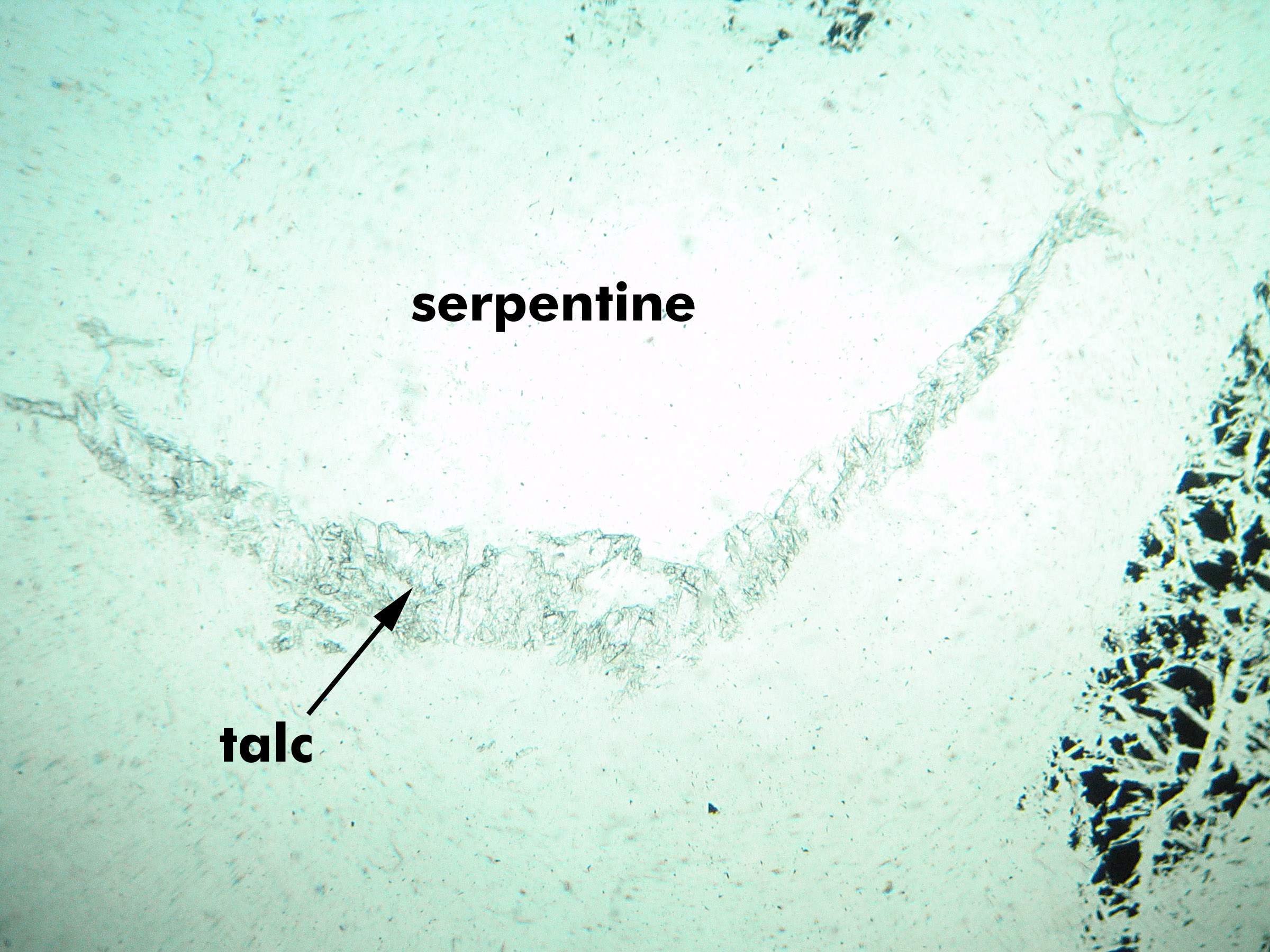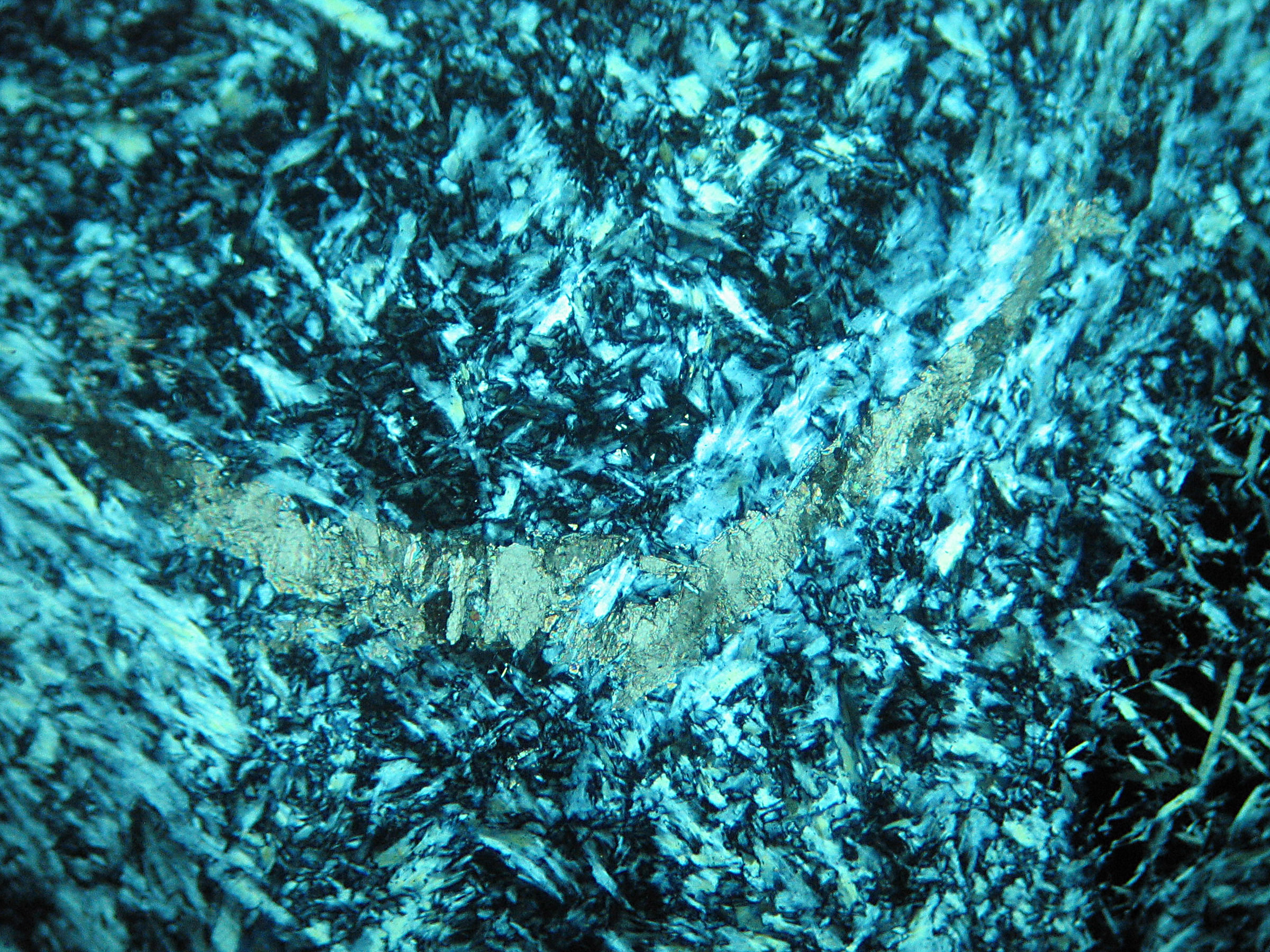Serpentine and Talc in a Serpentenite (Verde Antique)


This photomicrograph, about 2 mm across,
is of a serpentenite from Windsor County, Vermont. Most of the
photo shows antigorite, perhaps the most common variety of serpentine
(clear to light green color PP, 1st order interference colors XP).
The material forming a sickle-shaped patch near the center of
the view, showing higher relief and
very high order interference colors,
is talc. Some patchy magnetite (opaque)
can be seen near the right edge.
